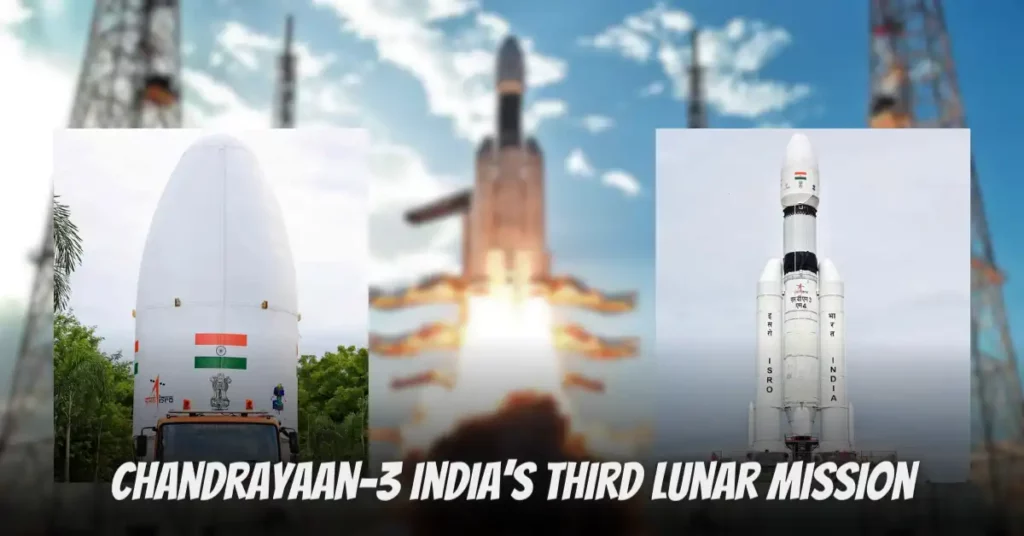India is gearing up for its third lunar mission, Chandrayaan-3, which is scheduled to launch on July 14 from the Satish Dhawan Space Centre in Sriharikota. The task follows the Chandrayaan-2 mission, which failed to land on the moon in 2019. Chandrayaan-3 aims to demonstrate India’s capability in soft landing and roving on the lunar surface.
How Long Will Chandrayaan-3 Take to Reach the Moon?
According to the available information, Chandrayaan-3 will take about 16 days to reach the moon after its launch on July 14, 2023. The mission will follow a similar trajectory as Chandrayaan-2, launched on July 22, 2019, and reached the lunar orbit on August 20, 2019.
Announcing the launch of Chandrayaan-3:
Announcing the launch of Chandrayaan-3:
🚀LVM3-M4/Chandrayaan-3 🛰️Mission:
The launch is now scheduled for
📆July 14, 2023, at 2:35 pm IST
from SDSC, SriharikotaStay tuned for the updates!
— ISRO (@isro) July 6, 2023
Chandrayaan-3 will launch a Geosynchronous Satellite Launch Vehicle Mark III (GSLV Mk III) rocket from the Satish Dhawan Space Centre in Sriharikota. The rocket will place the spacecraft into an elliptical parking orbit of approximately 170 kilometers by 36,500 km.
A two-tonne propulsion module will bring the lander–rover complex into a circular orbit about 100 km from the moon’s surface. The lander, named Vikram, will then separate from the propulsion module and perform a series of maneuvers to lower its orbit and align itself with the landing site near the lunar south pole.
The lander will then initiate a powered descent using its four throttleable liquid engines to reduce speed and altitude. The lander will also use laser and RF-based altimeters, velocimeters, hazard detection, and avoidance systems to ensure a safe and soft landing.
The landing of Chandrayaan-3 is expected to take place on August 23, 2023, around 69.367621 S, 32.348126 E. After the dock, the lander will deploy a six-wheeled rover named Pragyan, which will explore the lunar surface for about 14 Earth days.
Chandrayaan-3 mission: ISRO to attempt soft-landing on Moon on August 23 or August 24: Chairman Somanath S
— Press Trust of India (@PTI_News) July 6, 2023
Chandrayaan-3
Chandrayaan-3 is a lunar exploration mission that consists of a lander, a propulsion module, and a rover. The lander and the propulsion module are integrated as a single unit, while the rover is housed inside the lander. The Geosynchronous Satellite Launch Vehicle Mark III (GSLV Mk III), India’s most powerful rocket, will launch the mission.
The mission’s objective is to land near the moon’s south pole, where Chandrayaan-2’s Vikram lander had attempted to land but lost contact with Earth. The rover with six wheels and two cameras will come out of the lander and perform scientific experiments on the lunar soil and rocks for 14 days.
The mission will also test various technologies such as laser and RF-based altimeters, velocimeters, throttleable liquid engines, hazard detection and avoidance systems, and a landing leg mechanism.
Have a look at some of the latest trending news:
- Railway Confirms: Saffron Color Chosen for the Upcoming Vande Bharat Express
- Heavy Rainfall, Floods, and Landslides In Northern Regions of India, Schools Closed!!
- Foxconn May Build Semiconductor Factories in India With TSMC and TMH
What Are the Improvements From Chandrayaan-2?
Chandrayaan-3 is based on the learnings from Chandrayaan-2, India’s second lunar mission launched in July 2019. The mission had an orbiter, a lander, and a rover, but the lander failed to soft land on the moon due to a velocity anomaly during the final descent phase.
The orbiter, however, is still functioning and sending data to Earth. According to ISRO chief S Somanath, Chandrayaan-3 has adopted a “failure-based design” instead of the “success-based design” used for Chandrayaan-2.
This means that the mission has considered all the possible failure scenarios and taken measures to prevent them. For example, Chandrayaan-3 has enhanced capabilities to handle parameter variations or dispersions during landing. It also has more fuel reserves and more robust communication systems.
What Are the Challenges and Opportunities of Chandrayaan-3?
Chandrayaan-3 is a challenging mission as it involves landing on a rough and uneven terrain near the lunar south pole, which has not been explored by any other country so far.
The mission also faces competition from other countries such as China, which has successfully landed two rovers on the moon’s far side and plans to send another this year.
However, Chandrayaan-3 also offers opportunities for India to showcase its technological prowess and scientific potential in lunar exploration. The mission will also contribute to the global understanding of the moon’s geology, resources, and environment.
Moreover, Chandrayaan-3 will pave the way for India’s future human spaceflight program Gaganyaan, which aims to send three astronauts to low Earth orbit by 2024.

